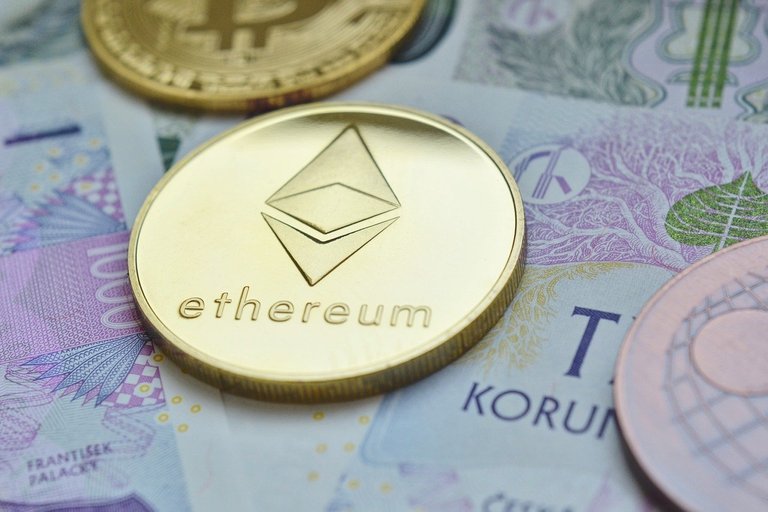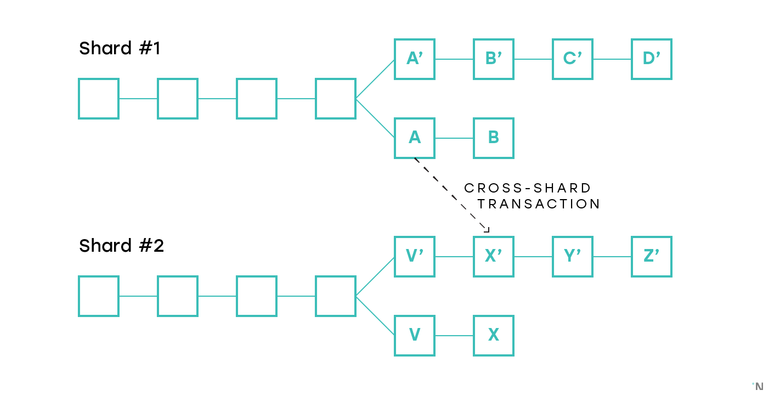What the merge Means for Ethereum Blockchain

You’ve heard it several times; “the merge is coming”! A normal cryptocurrency investor couldn’t care less what this actually means anyways. As long as it sends the price “to the moon”, we’ll be fine. Well, same here…almost. But the merge means so much more for ethereum and blockchain technology. A whole lot of developments are coming to the most used blockchain. Ethereum defeating its current problems holds a lot of importance for the whole space. The Merge is an important step in ethereum’s journey towards scalability.
What is the Merge
Scalability and memory friendliness are both very appealing features and are vital for mainstream adoption. Currently, ethereum gas price has risen very high and the cost of running transactions on the blockchain could get unbearable at some points.
Ethereum’s archival nodes currently sits at over five (5) terabytes (5Tb), the actual blockchain size is well over a hundred (110) Gigabytes and each block adds two (2) Megabytes to this already huge figure. Ethereum blockchain according to many ‘will never scale’ and in 2019, Bloomberg reported the Ethereum blockchain is ‘almost full’.
In computing and data storage, a truly scalable system is able to maintain a flexible size amidst an ever-increasing data and is limitless in the amount of data it can carry. Blockchain start-ups face this problem commonly as the struggle to achieve a truly infinite scalable blockchain continues. While many blockchain projects boast of being scalable, they mostly fall short of their ‘claims’. Only few can boast of reasonable scalability. These claims of Infinite scalability is mostly a marketing jibe used by many ‘ethereum killers’
Regardless of how fast a blockchain grows, splitting the blockchain into smaller interconnected units presents pieces of lighter ‘blockchains’ reduces the executable size considerably. This is the main idea behind Sharding. As part of the upgrade to ethereum 2.0, ethereum developers are planning to adopt this technology to split the ethereum blockchain into lighter pieces. Zilliqa, polkadot and NEAR blockchains are already using the sharding technology to make their blockchain lighter and their network faster.
The Sharding idea is to make a blockchain more efficient by partitioning it into lighter units. These ‘pieces’ of blockchains are known as ‘Shards’. Each shard store different types of data independent of other shards. Sharding on ethereum will split the blockchain into 64shards. Consider these shards as interconnected units that consists a blockchain.
Blockchain projects using the sharding technique are adopting different strategies to create a competent communication between the shards. Zilliqa uses a sharding version known as Partitioned sharding, where shards don’t communicate with each other directly through. NEAR protocol and Polkadot uses State sharding, where shards communicate with each other through a state, or central relay. Ethereum blockchain will also adopt the State sharding technology.
Ethereum developers plan to implement the sharding technology along with a switch to Proof of stake algorithm. The sharding technology will improve ethereum's scalability while the proof of stake consensus will do away with the bogus proof of work consensus to deliver an overall more efficient ethereum blockchain
The beacon chain went live in the last quarter of 2020 marking the first step towards implementing Proof of stake consensus on ethereum blockchain. The Merge will piece the Proof of work mainnet together with the Proof of stake Beacon chain. Completing the switch to Proof of stake and preparing the ethereum blockchain for Sharding implementation is a very important part of the Serenity upgrade. The efficiency of ethereum blockchain sequel to the sharding implementation will depend on how well the merge is able to unite the POW mainnet and the POS beacon chain and prepare the Ethereum blockchain for the Shard chain implementation.
The merge was initially proposed to happen in 2023, however recent developments hints at an early release and according to ethereum developer, Justin Drake, the merge chain could go live as early as august 2022.
What does this mean for Ethereum blockchain?
When the Merge happens, ethereum will be just one step away from finally completing one of the most important deliverable of the Serenity upgrade. The shard chain will be the third and final step in implementing the sharding technology as the merge completes the Proof of stake consensus implementation.
This is expected to bring tangible efficiency and make the ethereum blockchain truly scalable. But Sharding comes at a cost – Security. Fact is, most scalability solutions sacrifice security and decentralization for speed and efficiency. Sharding is just another example. Splitting the blockchain into shards creates units of independent blockchains with relatively less security. These shards could be attacked individually in an attempt to compromise the blockchain. A successful attack on any of the shards, affects the rest of the network.
The merge confirms the switch to Proof of stake consensus algorithm lined up as part of the proposed upgrade. This algorithm, just like Sharding is known to improve efficiency and reduce block size…and security as well. A number of ethereum competitors are found lacking in security and decentralization, but relative to ethereum blockchain, they are incredibly fast, efficient and cheap. The Merge could be a step closer to a faster, cheaper and more efficient ethereum blockchain; unfortunately, it could also be a step closer to a centralized and less secure ethereum blockchain.
Follow up with CRYPTOCURRENCY SCRIPTS to stay refreshed in crypto space with comprehensive articles and important tips.
Hire a freelance writer
